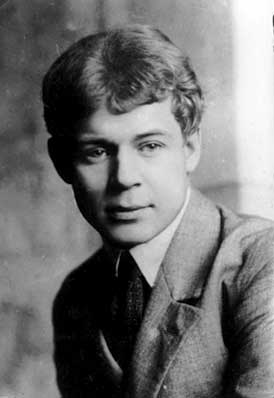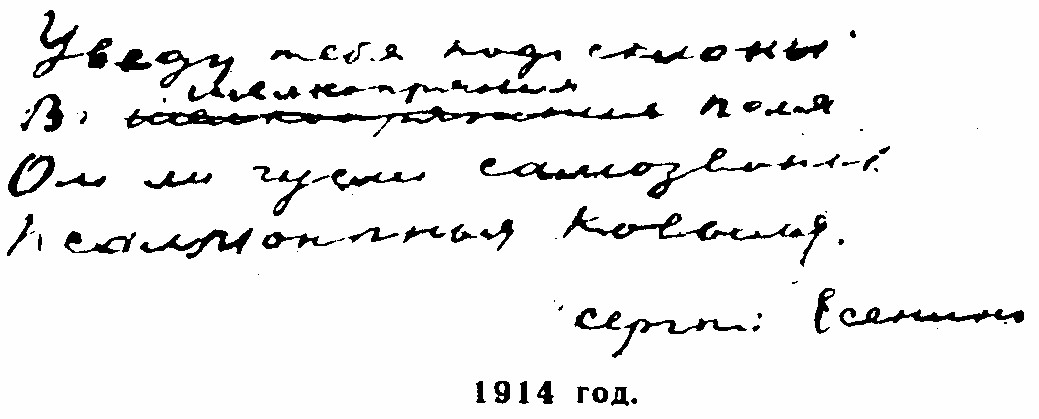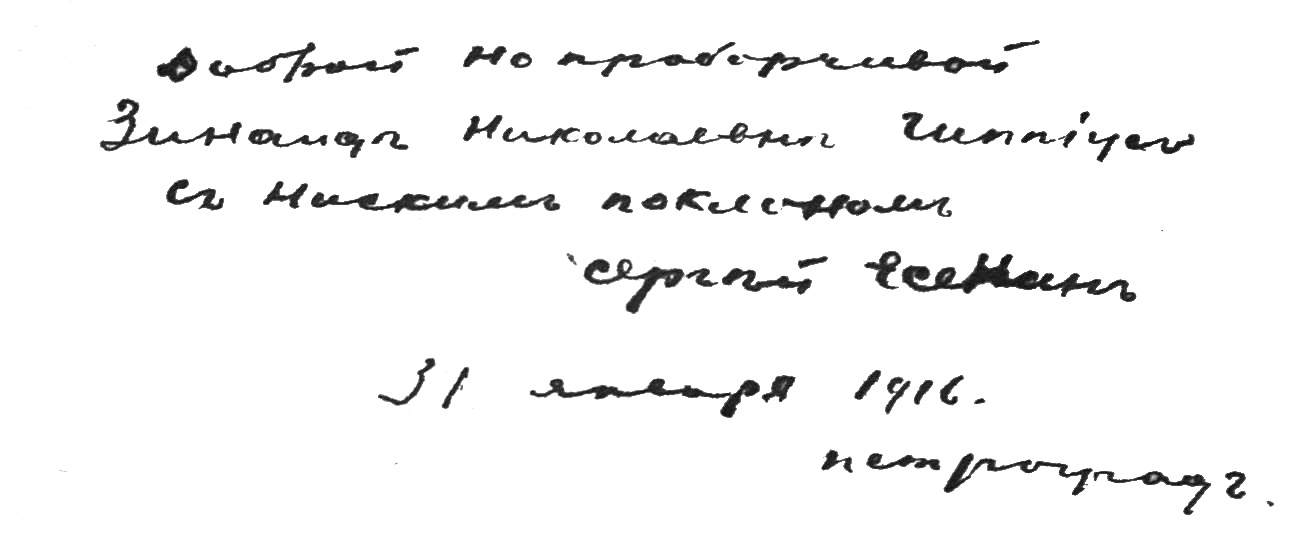 Sergei Yesenin is a famous Russian poet. He was born in Konstantinovo in the Ryazan region of Russian Empire to a peasant family. He is one of the founders of imaginism, the poetic flow which sprang up in Russia in the post-revolutionary period on the basis of futurism. Imaginism claimed that rich verbal images are the essence of poetry.
His first book was issued in 1916 when a poet was 21. His poetry is both lyrical and social. Poet committed suicide (or according to some versions was killed) in 1925.
Unintentionally, Yesenin told the best and true story of his life in his numerous autographs. All his ambitions, breakdowns and talent are expressed in his signatures. He experimented both with his poetry and life.
The graphological analysis made by a famous expert of the early 1900’s D.M. Zouev-Insarov.

1913-1914: the slanting handwriting, the letters closely adjoin each other (whereas in his late autographs they are separated). Some word endings are wedge-shaped. Running hand. The autograph is slant and joint. Tiny penmanship. The prevailing arch lines imply frankness, sensitiveness, kindness, initiative, disingenuity, even slyness, natural gifts, desire to show oneself, logics, practicality and prudence in relations.

1916: the handwriting is becoming straight, and enclosed, reserved in expressing emotions. Only one half of the total number of letters are joint, some letters are stylizing which implies intensification of creative potential, and gradual switch from practical aims to lofty ideas. Meanwhile, the desire to take first place and rise above all others.

1918: the letters are almost vertical. The capital letters are growing and stylizing. The letters are almost completely disconnected, and ambitious mood is prevailing. The ability for self-criticism is dulled. Self-assurance is growing. The personality is gradually perverting.

1923-1924: the pressures applied are irregular; the letters are uneven and generally stylized. The letters are completely isolated: it looks as though each of them “lives its own life”. The punctuation is well-marked. The letters are no longer wedge-formed; as the author is becoming more self-assured he is rejecting his former diplomacy and becoming more suspicious and distrustful. The slants of the letters indicate imagination, mistrustfulness and monophobia. His desires, though still strong, are unstable. The author is becoming annoyed and crusty. He is looking for the new forms. His seeking after fame is becoming aberrant. He is becoming indifferent to his financial condition. Imagination and intuition prevail over logics. He is concentrated on his feelings and moods.
1925: The letters are sometimes torn, the pressure is irregular. The slants are of different styles which imply the poet is trying to hide the flushes of suspiciousness, frustration and despair. Obsessional syndrom. Anomie. Fear not of the death, but the end of personal existence.
The lines of Yesenin’s suicide note (a poem) are violent which indicate depression and stress he experienced when writing the note.
|